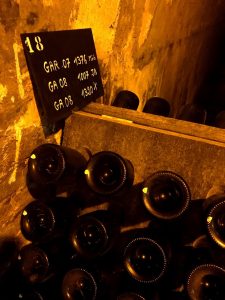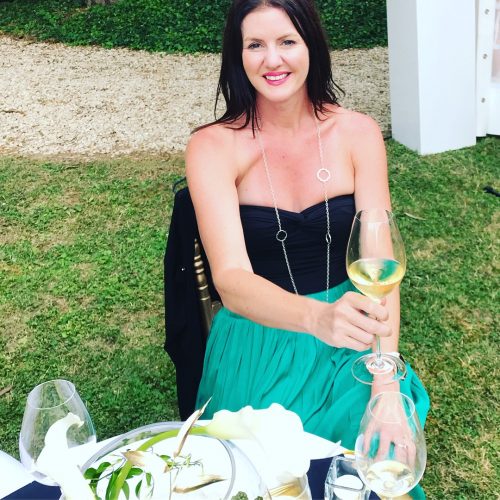
The Top Five Things I Love About Bollinger Champagnes
- Marnie Nichols
- July 13, 2019
- Blog, Champagne Bollinger, Top Fives
Before I tell you why I love the Bollinger champagne style, I thought I’d start by explaining just how much I love Bollinger champagnes.
Bollinger champagnes were the very first champagnes I ever wrote about when I started Bubble & Flute. And I’ve just realised writing these posts today that I have actually gone on to write about Bollinger champagnes more than 20 times on my blog (and no – I am not on the Bolly payroll, I wish lol!)
My love affair with the Bolly champagne style was also the catalyst for me developing my “Champagne Style Guide”. When I was just starting out trying different champagnes with my friends, we’d all bring along our faves to dinner parties – I would always bring the Bolly while my other friends would favour Pol Roger or Taittinger or Billecart-Salmon.
We all had a certain champagne we loved and kept coming back to. So I did a little more research (actually, make that a LOT more research, and by research I mean DRINKING!), and developed my theory that there are four basic champagne styles.
When you read my “Champagne Style Guide”, it starts with a simple five-question quiz. After you answer the five questions, I reveal your champagne style – mine is ‘rich and robust’ – and then I reveal your ‘perfect match’ … and Bollinger is my perfect match. (In my Champagne Style Guide, I also give you more champagne recommendations based on your style that I think you are totally going to love! #ICYMI check out my Champagne Style Guide!)
So after all that research to work out how much I loved the Bolly style, the next step was further research to find out why I think Bollinger champagnes are so amazing.
So based on about a decade of ‘research’ here are The Top Five Things I Love About Bollinger Champagnes.
The Top Five Things I Love About Bollinger champagnes
1. Pinot noir
I said my champagne style was ‘rich and robust’ … the pinot noir grape is the hallmark of the rich and robust style.
And pinot noir happens to represent 60% of the total of Bollinger’s vineyards/grape crops, and each bottle of Bollinger’s entry level non-vintage champagne, the Special Cuvée blend, is 60% pinot noir.
What does pinot noir mean for the champagne?
A lot of experts describe the pinot noir in champagne as giving it vigour, complexity, fullness, strength, or its backbone.
To talk taste, pinot noir grapes in champagne offer flavours like strawberries, raspberries, cherries, blueberries, plums, and blackberries which bring deeper, richer characteristics.
Drinking Bollinger, it is hard to define just one flavour and I will smell and taste something different every time, but there is no doubting the ripe fruits!
#HOMEWORK – if you need to catch up on some champagne theory, there are three types of grapes used in champagne – chardonnay, pinot noir and pinot meunier (more here).

2. Then there is barrel fermentation
#GEEKALERT – I do talk about a bunch of champagne making techniques in this post. So if you need to catch up on some champagne theory and want to know all about how champagne is made, you should check out my Champagne School lessons on making champagne.
A lot of champagne producers use oak for fermentation and for many it is a hallmark. Bollinger uses 3,500 oak barrels to vinify the best grand and premier cru musts (or grape juice) which is more than any producer with perhaps the exception of Krug.

About barrels at Bolly….
- Bollinger doesn’t age in barrels… they use barrels for alcoholic fermentation for 4-8 months.
- They only use old barrels (average of 20 years old) and this is specifically so the barrels don’t impart woody flavours to the wine.
- So why do they use barrels if they don’t want the wood aromas and flavours? They use barrels because the porosity of wood allows oxygen into the wine for micro-oxygenation. Instead of adding woody flavours, this helps reveal the fruit in the wine – the richer and fuller flavours that I LOVE so much – and it allows the wine to age better (which is important – more about ageing as you read on!). But basically, because of the small amount of oxygen in contact with the wine, it can age longer and resist the negative effects of oxygen over time.
3. Ageing reserve wines in magnums
Since we started talking about ageing, now is a good time to introduce the BIG secret to the amazingness (and uniqueness) of Bollinger champagnes.
Bollinger stores its reserve wines in 750,000 magnums, stored village by village and vintage by vintage.
Almost one hundred percent of the time, champagne producers store their reserve wines in tanks . Sometimes it is kept in wood, but Bollinger is one of the few producers who age reserve wines in magnums. Most winemakers actually think it is completely crazy. The few who do it have a much smaller production than Bollinger because it is an incredibly expensive way of doing things.
Bollinger uses between 80,000 and 120,000 magnums every year to blend their champagnes. All of the magnums of reserve wines are stored under cork (not a cap) because it allows for longer ageing. And remember, reserve wines are still wines – they haven’t undergone secondary fermentation yet so when the time comes to use them, they are all opened individually, by hand and have to be tested for cork taint.

It takes a team of four people two months to open and individually smell each magnum of reserve wine.
Can you imagine being the CFO at Bollinger and you discover that for two months four people manually open bottles and smell wine when everyone else uses tanks and a pump?
But Bollinger doesn’t follow the norm because they believe their technique brings more richness and complexity to the wines.
And after waiting patiently for five, ten, or fifteen years before deciding to use the magnums in a blend, the cellar master then sets about using the magnums as a kind of magic champagne spice box. If the cellar master wants to bring some fruit to the wine, he will take a pinot noir from a warm year to bring some depth. If he wants some freshness, he might take a chardonnay from a cold year like 2007.
Mind-blowing process that pays off brilliantly to produce a mind-blowing champagne! And when you look at the cost of a bottle of Bollinger when this amount of love and attention has gone into it compared to some other big brands, it is a no-brainer to me to spend an extra $10!
4. Time or ageing
So after the blending has been done and the wines are sent off for secondary fermentation, Bollinger age their champagnes at least twice as long as is required by the appellation (15 months is required for non-vintage and 3 years for vintages).

Ageing makes the wine richer and more complex but also has an effect in terms of texture, offering a lot of creaminess to the wine. Bollinger describe their wines as having a creamy effervescence that underpins the Bollinger style that can only come from long ageing.
The longer ageing makes the wine richer (more about how here). My guide at Bollinger shared a great way of understanding the effect of ageing on the aromas in champagne.
He explained if you thought about ageing in terms of apple aromas, after two years of lees ageing, you’ll be able to detect apple aromas in wine. But after five years, the aromas will have developed to smell more like cooked apple. And if you wait another two years (so now six years total) it will develop to smell like baked apple pie. And then when you reach ten years of ageing, the aroma develops to smell like tarte tatin.
It’s all these technical elements that make Bollinger remarkable.
5. And for me, this all adds up to…
Drinking any glass of Bollinger for me is like the taste equivalent of listening to Adele. Soulful, timeless, powerful, and rich. Adele’s voice can move you, break your heart, make you want to cry and fall in love all at once.
Any time I drink a glass of Bollinger I feel like I’m rolling in the deep… I can feel a fire starting in my heart, reaching a fever pitch, and it’s bringing me out the dark.

Do you love Bollinger? Tell me If you do, I’d love to hear why so make sure you post a pic and tag @bubbleandflute #bubbleandflute #happychamper #champagnefan to let me know!
My Top 5 Fantasy Valentine’s Day Dates And The Champagnes We’d Pop
My Top Five Everyday Champagnes
My top five winter champagnes
Bollinger Special Cuvée
My Top Five Autumn Champagnes (2021)
Bollinger La Grande Année 2004
Champagne Magic From 10 Champagne Brands You (Probably) Know And (Hopefully!) Love
A Visit to Champagne Bollinger
Champagne Bollinger… A House Firmly On My ‘Deserted Island’ List
My Top Five Champagnes For A Really Special Occasion
Bubble & Flute promotes the responsible consumption of alcohol for individuals of legal drinking age in their country. Information is correct and accurate at the time of publishing.


















